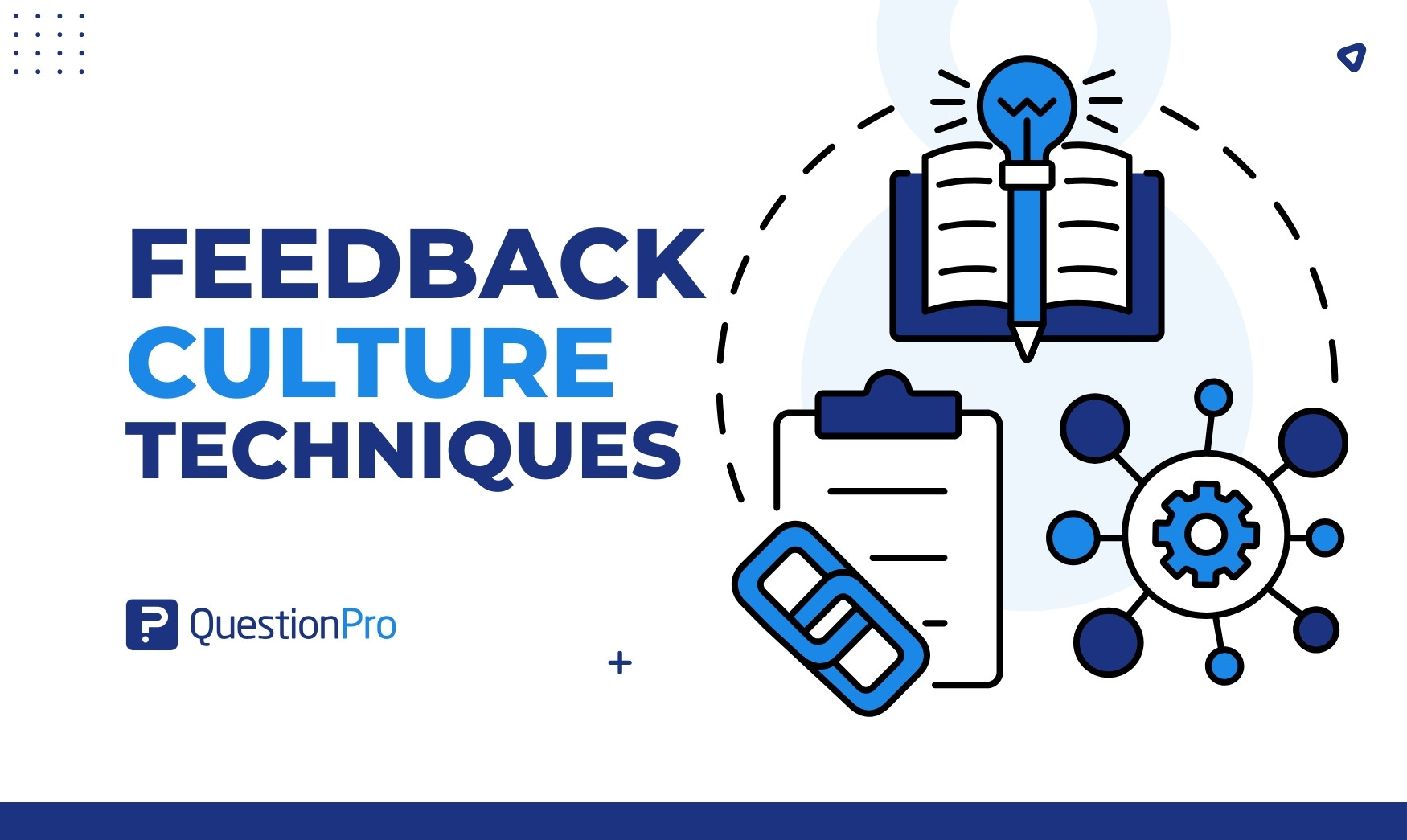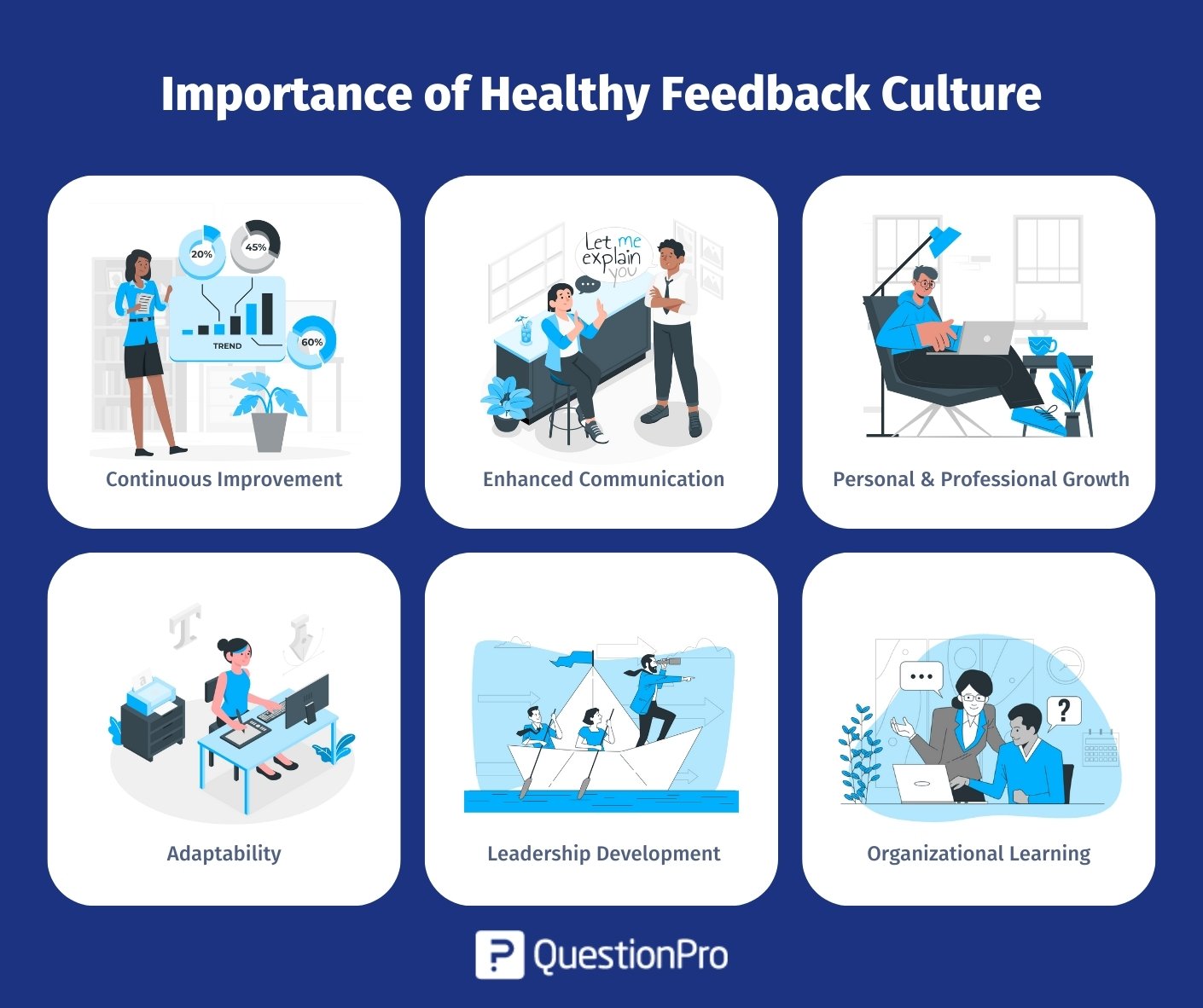
Any successful workplace must include honest feedback as a critical element. It provides both managers and staff with the chance to continue learning. Each team member’s ability to provide input is increased so that everyone feels comfortable and is encouraged to do so. Let’s talk about the best feedback culture techniques for better workplaces.
Consistency, initiative, time, and the appropriate mindset are necessary to create a positive feedback culture. Building a solid feedback foundation is crucial to improving corporate communication, increasing productivity overall, and decreasing attrition while enhancing employee engagement.
What is Feedback Culture?
A feedback culture in the workplace is one in which culture management and employees regularly exchange continuous feedback and respond to it by taking appropriate action.
Everyone, whether managers or entry-level employees, should be subject to the feedback culture. A feedback culture is a workplace that heavily focuses on candid and open communication among leaders, managers, and employees.
Positive, negative, constructive, etc., feedback is included in this culture. Everyone in the company, from the newest hires to the top executives, can give and get feedback.
A growth attitude is developed in the Work culture by regularly sharing candid comments. It motivates workers to advance their knowledge, grow, and look for new challenges.
A positive feedback culture is crucial for the following reasons as well:
- Creates a positive work environment
- Improves employee communication skills
- Essential performance data and business insights are provided
- Provides possibilities for professional growth
- Improves employee engagement
Types of Feedback Culture
Feedback culture can vary from one organization to another based on its values, leadership style, and employee dynamics. Here are some common types of feedback culture:
Open Feedback Culture:
In an open feedback culture, communication is transparent, and employees feel comfortable sharing their opinions and ideas openly. Feedback is actively promoted and embraced across all tiers of the organization.
Constructive Feedback Culture:
This culture emphasizes providing feedback in a constructive and supportive manner. Feedback is framed in a way that focuses on improvement rather than criticism.
360-Degree Feedback Culture:
This culture promotes feedback to circulate freely among all stakeholders, including managers to employees, employees to managers, and peers. It provides a comprehensive view of an individual’s performance and behavior.
Inclusive Feedback Culture:
This culture promotes feedback from employees at all levels, regardless of their position. It values diverse perspectives and encourages everyone to contribute to the feedback process.
Data-Driven Feedback Culture:
Feedback is collected and analyzed using data and metrics. This approach relies on objective data to evaluate performance and make decisions.
Feedback-Driven Innovation Culture:
Organizations that prioritize innovation may have a culture of feedback that encourages employees to share innovative ideas and suggestions for improvement.
Understanding the type of culture of feedback within your organization can help you tailor your efforts to foster a more effective and positive feedback environment that aligns with your organizational goals and values.
Importance of Healthy Feedback Culture
A healthy culture is paramount in any organization, yielding many benefits and positive outcomes. Here are several compelling reasons why cultivating such a culture is crucial:

Continuous Improvement:
Feedback is a valuable source of insights for individuals and teams, enabling them to pinpoint strengths and areas for enhancement. It fosters an ongoing learning process, resulting in heightened performance and increased productivity.
Enhanced Communication:
A culture centered around feedback fosters an environment of openness and transparency. When employees feel at ease giving and receiving feedback, it paves the way for improved dialogue and a deeper appreciation of each other’s viewpoints.
Personal & Professional Growth:
Feedback equips individuals with the information necessary for personal and professional growth, enabling them to refine their skills and competencies. It catalyzes career advancement, helping employees realize their full potential.
Adaptability:
Organizations facing change or challenges benefit substantially from a feedback-driven culture. Feedback equips leaders and teams with the tools to adapt swiftly and effectively to new strategies, technologies, or market dynamics.
Leadership Development:
Leaders who actively seek out and provide feedback set a positive example for their teams. Their actions reflect humility and a dedication to personal growth, serving as a source of inspiration for others.
Organizational Learning:
A feedback culture cultivates a broader learning culture within the organization. The insights from feedback contribute to the organization’s adaptability, evolution, and informed decision-making.
A robust feedback rich culture is a cornerstone for an organization’s success, nurturing communication, engagement, development, and innovation while fostering a cheerful workplace ambiance. Incorporating elements such as critical feedback, well-defined feedback processes, meaningful feedback delivery, and regular feedback mechanisms can further enhance employee motivation and create a thriving, healthy organizational culture.
10 Positive Feedback Culture Techniques
Building a strong feedback culture at work takes time and commitment, but the results are worthwhile. Prioritize ongoing feedback conversations with your team as a leader to demonstrate your concern for the individuals doing the task. It indicates that the boss and team members value them.
Although there are no shortcuts to changing business culture, following these tips can help the process go more smoothly.
Give Consistent, Constructive Feedback
Giving honest and trustworthy feedback is necessary to kick off the process. Even though there are areas that need improvement, if you can provide direct feedbacks that does not make the other person feel bad, you are well on your way to creating a culture that values input.
Consistent, targeted feedbacks are essential to the employee growth of a supportive feedback rich culture. Try to give coworkers and colleagues feedback more frequently as well.
For example, instead of the customary “annual performance review,” think of project-based feedback meetings instead.
Develop A Growth-Oriented Mindset
If an individual has a growth mentality, they are much more likely to accept feedback well, whether favorable or focused on areas where an employee may develop.
A growth mindset enables employees to recognize their areas of professional and personal success and their areas for improvement.
A growth-minded employee knows there’s always space for development and that they’re on the right track as long as they endeavor to do so.
Teach Staffs How to Provide & Receive Feedback
Employees frequently provide feedback in various methods, which is one difficulty with feedback.
One project manager might concentrate on providing only positive feedback and avoid making any unfavorable remarks.
However, a different project manager might concentrate nearly entirely on areas where staff members can improve.
Because staff members are unsure what to anticipate from their supervisors or one another, this separation breeds a sense of fear and dread about criticism. Because of this, teaching staff members how to provide and accept feedback is crucial. Communication is a lot simpler if everyone is on the same page.
Initially, Work Your Way Down
Every change always begins at the top. Your C-suite executives, vice presidents, and key managers must be serious about promoting change if you genuinely desire a positive feedback culture. Up and down the organizational hierarchy, they should provide feedback and solicit it from one another.
As workers become aware of this, they will feel more at ease providing feedback to their managers and coworkers, fostering an environment at work that is open and honest.
Encourage Employees to Be Honest to Feel Safe
Employees must believe they can be honest for a healthy feedback culture to succeed. Your feedback is also flawed if workers think they may face the consequences for offering their sincere ideas.
Encourage a “feedback-safe” environment and encourage employees to be open and honest about their emotions. Remind them that providing you or your coworkers with frank comments won’t have any adverse effects.
Additionally, you should be aware that everyone has a varied level of emotional intelligence and that some people will be more (or less) at ease providing feedback. Respect these folks and avoid pressuring them to give comments.
Set up Reasonable, Clear Guidelines for Feedback & Abide
The process can be standardized and more pleasant for staff members by establishing feedback criteria. Consider outlining the following:
- Who offers each person feedback?
- When should you provide feedback?
- How can we offer criticism? There is a formal procedure, right?
- What do the feedback sessions’ objectives each time?
Put Your Words into Action
Practice always makes perfect. Only by working hard every day can a feedback culture be developed. Thus, your efforts will be ineffective until you “practice what you preach” and endeavor to make a positive feedback culture a reality.
Include feedback in meetings, daily activities, and other areas. Consult with your staff to learn ways to improve input flow and how they feel it should be incorporated into everyday tasks.
Yes, asking for employee input is the most incredible method to create a feedback rich culture. Though paradoxical, this is the case.
Use A Variety of Feedback Channels
Employees should be able to provide feedback to one another in more than one formal system. People have diverse communication preferences; for instance, one employee could feel comfortable giving feedback in person, but another would prefer to do so online.
Combining online and in-person input is best to get the most accurate results. Online feedback gives the recipient time to consider the context. If you deliver it face-to-face later, you can go into further detail.
Maintaining variety and diversity enables individuals to discover their “voice” and determine their desired feedback format.
Balance Feedback is Beneficial, But don’t Be Negative
Not all feedback is “sunshine and rainbows.” Employees are flawed and can only progress if they recognize their mistakes or blunders. You’ll need to offer some constructive criticism and corrective feedback at some point.
However, this does not imply that you should be unkind or harsh in your corrections. When providing corrective feedback, start by highlighting the positive actions that an employee or colleague is taking.
Draw attention to their successes, then discuss what needs improvement.
Positive thinking is crucial. Your entire culture of feedback collapses when staff members feel uncomfortable giving and accepting feedbacks. Make careful to point out areas for improvement, but be gentle with your comments.
Show How Feedback was Used to Make Decisions
The feedback that doesn’t affect company decisions appears meaningless and useless, and that much is true. Therefore, you should inform them if you decide based on their input.
Don’t only concentrate on explaining the modification, but also explain why you made it in light of their comments. They feel that what they have to say counts because of this, which encourages further employee feedback.
You will only be able to develop a positive feedback culture if you bother explaining why you make business changes or, worse, if you make adjustments based on feedbacks. People will give up on giving you feedback if they feel neglected or their efforts are wasted.
Conclusion
Developing a robust knowledge pf feedback culture techniques extends beyond occasional staff surveys and quarterly performance assessments. It necessitates integrating all aspects of your operations and experimenting with various techniques for delivering and receiving feedback to determine what suits your organization best.
A thriving it enhances workplace enjoyment, job satisfaction, and productivity and is a cornerstone for a successful company. This endeavor involves intricate tasks, including refining processes and addressing the inevitable challenges during the journey.
For comprehensive feedback on meeting employee expectations and enacting positive change within your organization, explore QuestionPro Workforce. This platform can provide insights on negative feedback, effective feedback mechanisms, employee feedback strategies, cultivating a strong feedback culture, and harnessing feedback as a driving force for improvement.







